Finally, a Museum Exhibit of Trade Catalogs!
I’ve collected vintage trade catalogs for years. Now they’ve gotten the museum treatment at one of America’s most famous institutions.
As you probably know by now, I love trade catalogs. So I was excited to learn that the Metropolitan Museum of Art, of all places — probably the most famous art museum in the United States, and among the most famous in the world — recently opened an exhibition of trade catalogs from its extensive catalog collection. (I didn’t even know they had a catalog collection!) It’s not often that I get to see one of my favorite artifact categories showcased in a museum setting.
I should probably take a minute here to explain why I’m so fond of trade catalogs (or salesman sample catalogs, or whatever you prefer to call them). Part of it is that it’s pleasing and satisfying to see lots of similar items grouped together, like a collection. Also, I like that that each catalog tends to be its own little self-contained world, filled with the company’s inventory-numbering system, industry jargon, assorted protocols that are just taken for granted, and so on. It’s all very specific, and I’m a big fan of specificity. Speaking of which, trade catalogs also tend to be filled with very specific solutions to very specific problems you never even thought of before — I like that.
I went to the Met yesterday to check out the exhibit (which is called, appropriately, Art of Commerce). It’s in the museum’s library and is fairly small, consisting of a few glass display cases, but they still managed to feature several dozen gorgeous catalogs. Here are the ones I particularly liked (with apologies in advance for the overhead lighting’s glare that’s sometimes visible on the display cases).
We can start with this magnificent sample catalog of patterned glass:
———
Next up is a pair of Czech furniture catalogs from the 1930s, with really nice renderings of the product line:
———
The color art-supply renderings on the right-side page of this next catalog really capture what I was talking about when I mentioned how satisfying it is to see groupings of similar items:
———
Speaking of art supplies, I love the color depictions of paintbrushes in this next catalog, which is from 1910:
———
Naturally, I love the look of this 1930 marching band uniform catalog (although I wish we could see the interior pages). The manufacturer, DeMoulin Brothers, is still in business today.
———
Oh man, check out the spectacular Art Deco illustration in this next photo, which is from a catalog of women’s furnishings. Check out the cigarette lighter that also has a compartment for matches!
———
It’s a little strange to think that there’d be a catalog for cake decorating patterns (seems more like you’d call that a cookbook or a lookbook), but that’s what this next one is. The inscription, “Frohe Ostern,” is German for “Happy Easter,” which explains the chick bursting through the egg:
———
The cufflinks in this next catalog look like they could be available for sale today, but the catalog is from the 1930s (you can see the entire catalog here):
———
See if you can figure out what this next one is for. The text is en Français, so try not to read it if you know French — just look at the illustrations:
The answer is that it’s a catalog of public urinal designs (or pissoirs). Additional info, along with the entire catalog, is available here.
———
Maybe even more unlikely than a urinal catalog is an elevator car catalog. This one is from 1927:
———
This next one is a page from a 1911 ceramic tile pattern catalog. Imagine having your bathroom floor done up in one of these beautiful patterns:
———
Bob Dylan, Stevie Wonder, and countless other musicians have used Hohner harmonicas. Here are two of their old catalogs — 1931 on the left, 1949 on the right. Note that these designs both include initials, presumably from the illustrator or designer — a rarity on a commercial catalog.
———
Here’s something I’ve never seen before: This catalog of “mourning stationery” features black-bordered writing paper and envelopes with black borders along all of the edges:
———
And let’s wrap things up with a classic modernist furniture catalog from the 1920s. I love the overhead perspective for the cover design (and the company is still in business today):
———
I could go on, but that’s probably enough for you to get the idea. Beautiful stuff, right? If there’s a problem with this kind of exhibit, it’s that they can show us only one page or spread, which diminishes the cumulative oomph that one typically gets when paging through a catalog.
I wish I could tell you to go see this exhibit, but today is its last day. Sorry about that — I’ll try to be better about seeing and recommending things when they’re still available.
(Special thanks to Jessica Wecker for bringing this exhibit to my attention.)
Paul Lukas has been obsessing over the inconspicuous for most of his life, and has been writing about those obsessions for more than 30 years. You can contact him here.



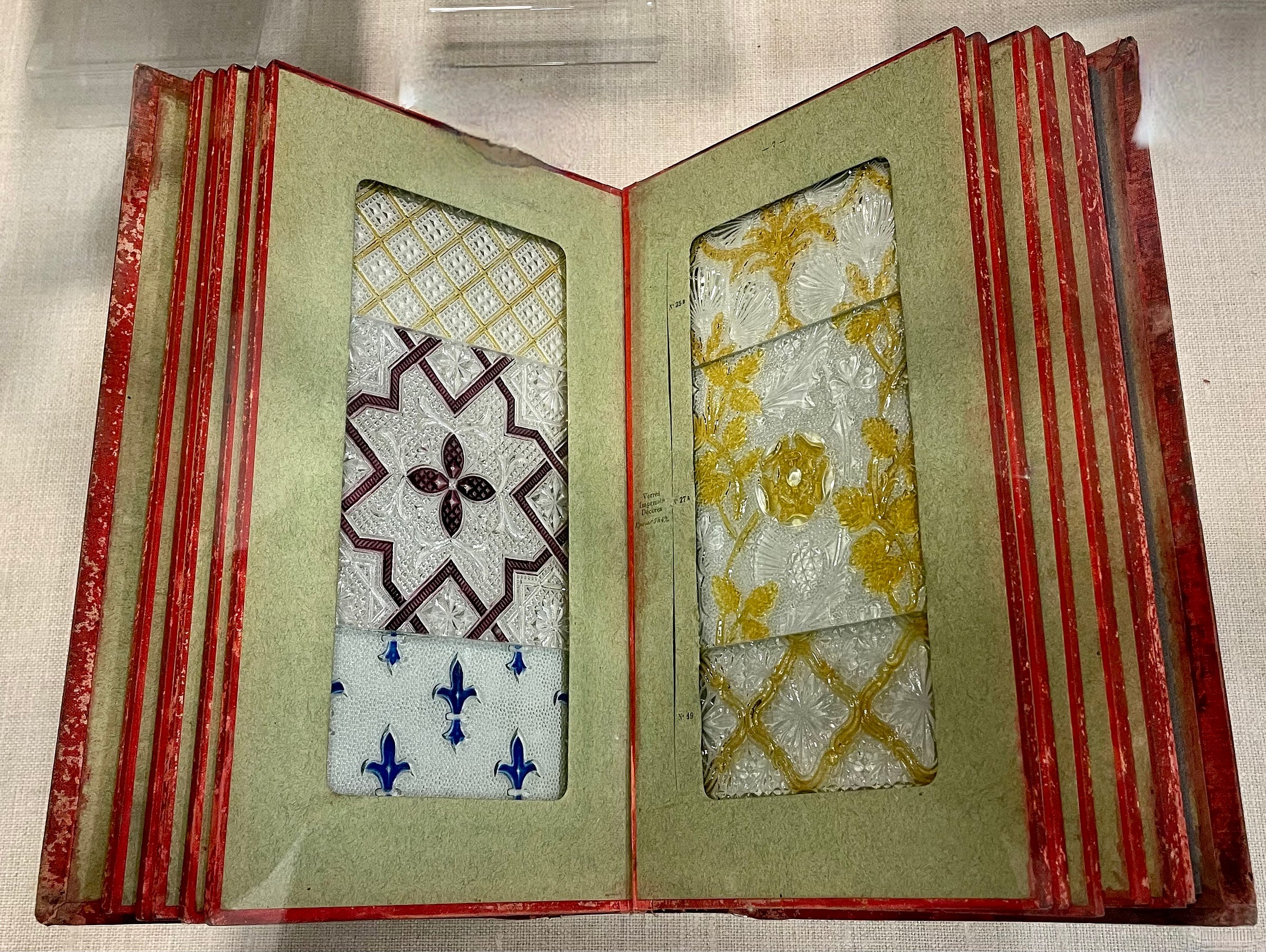
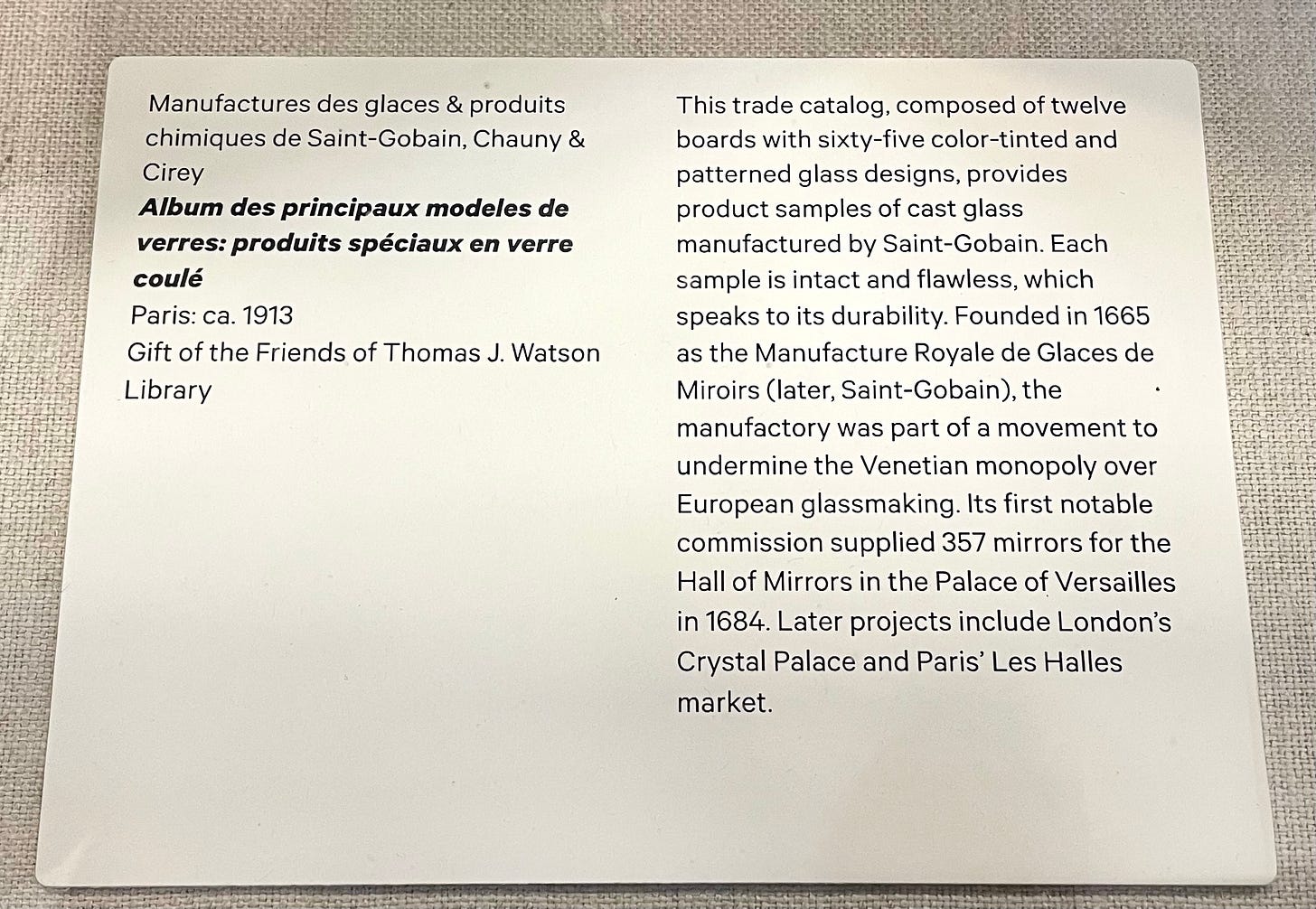

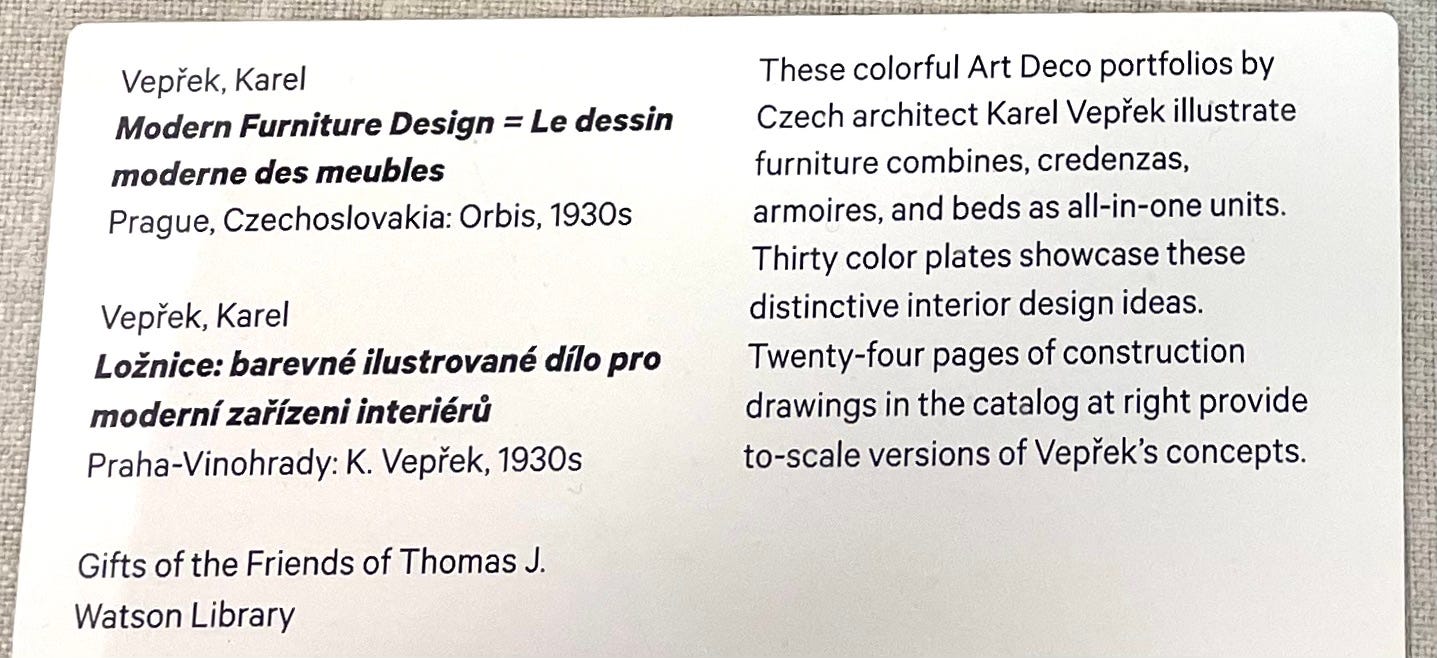



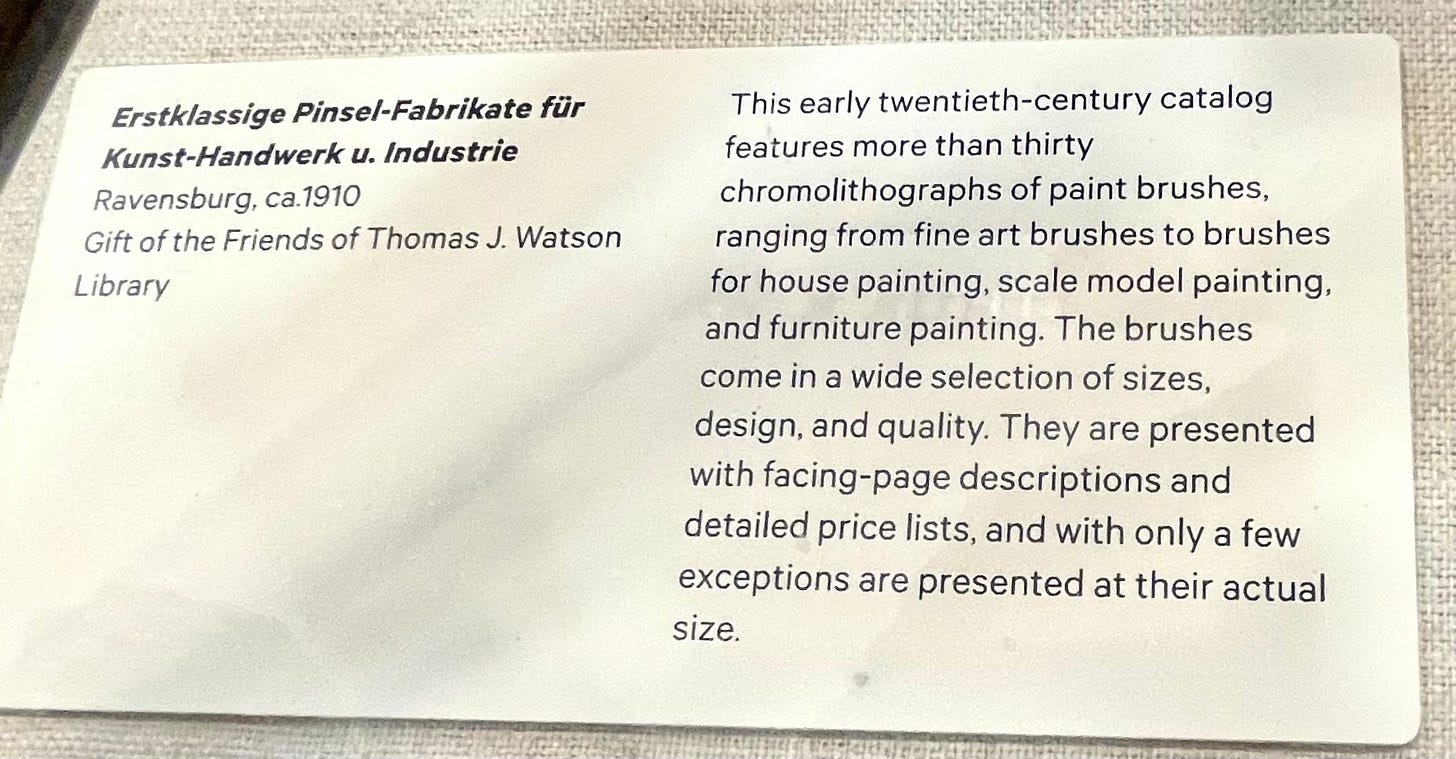

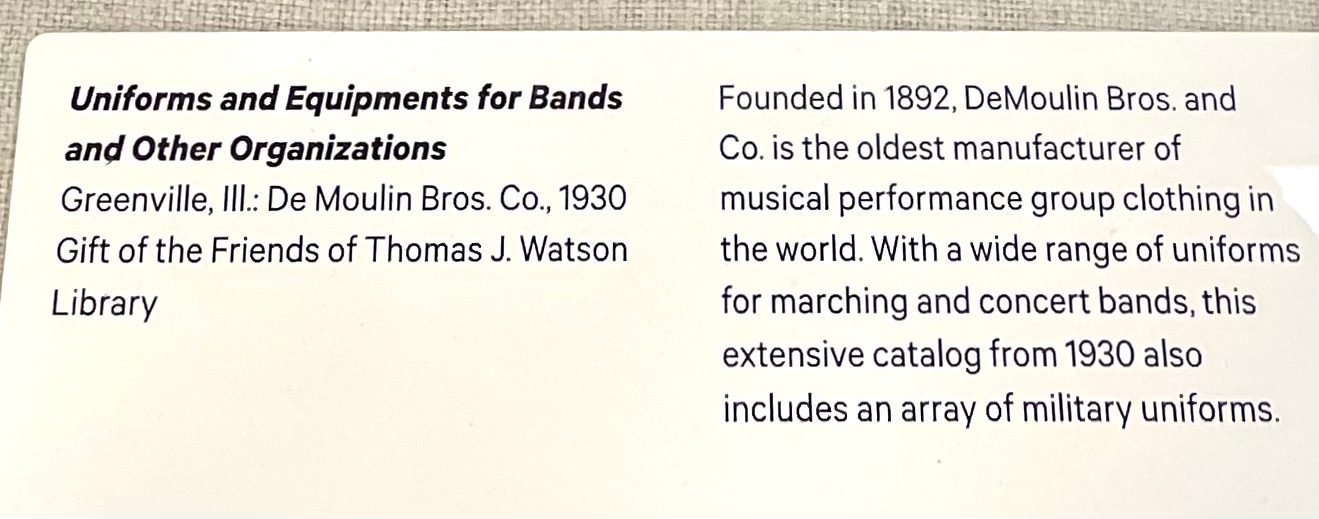
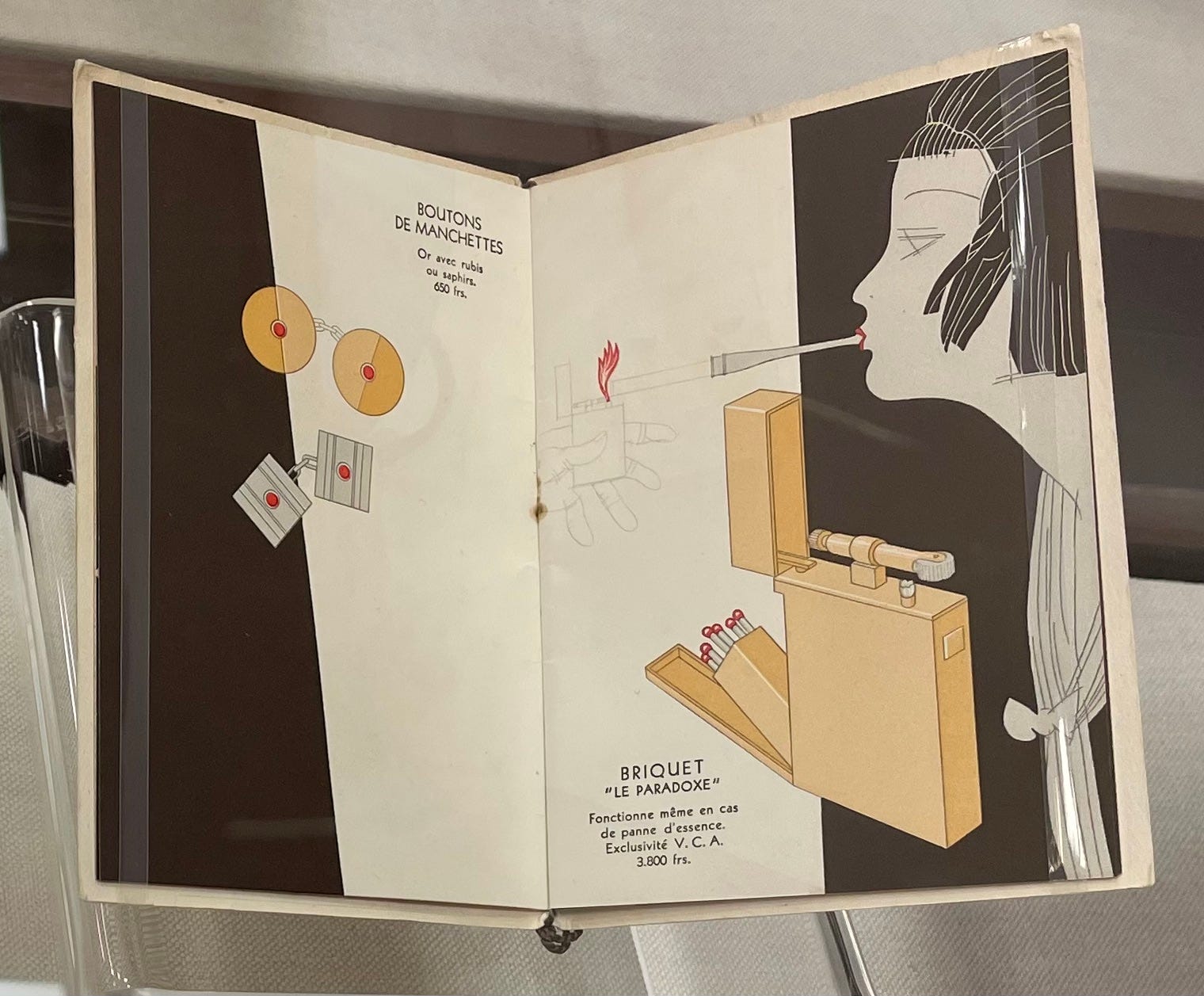
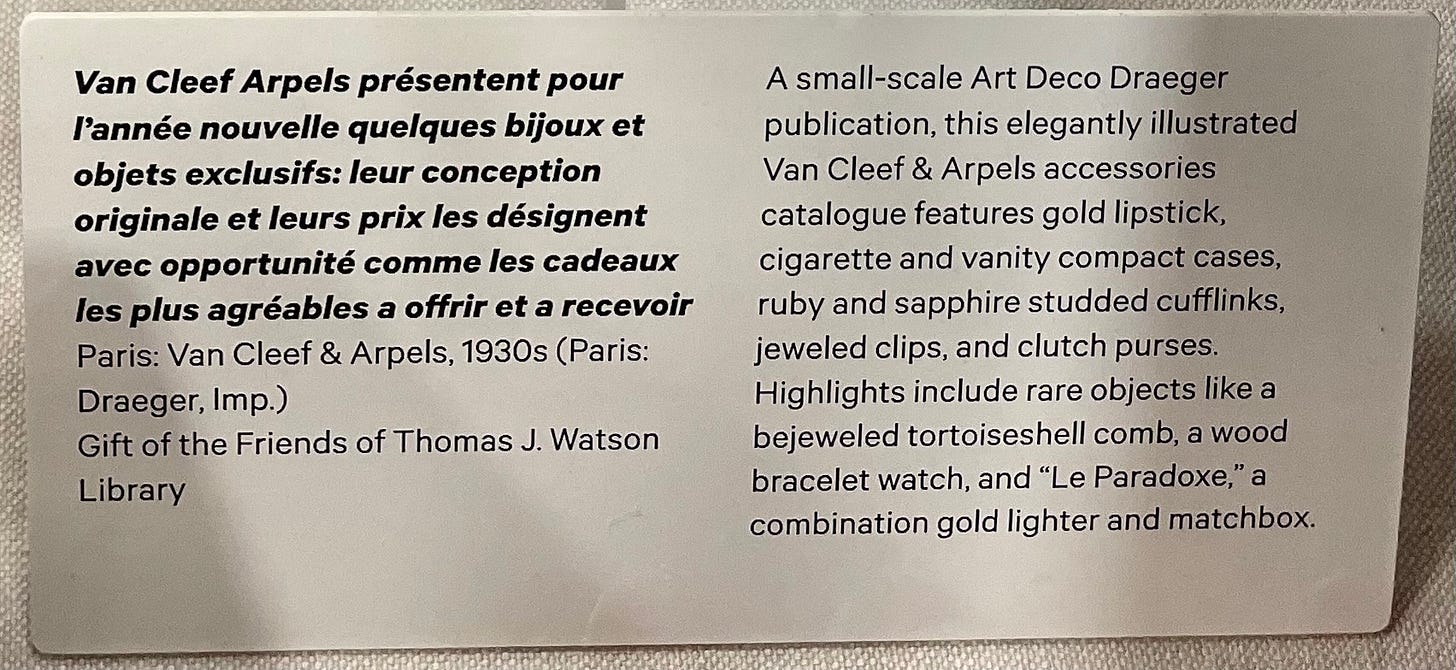
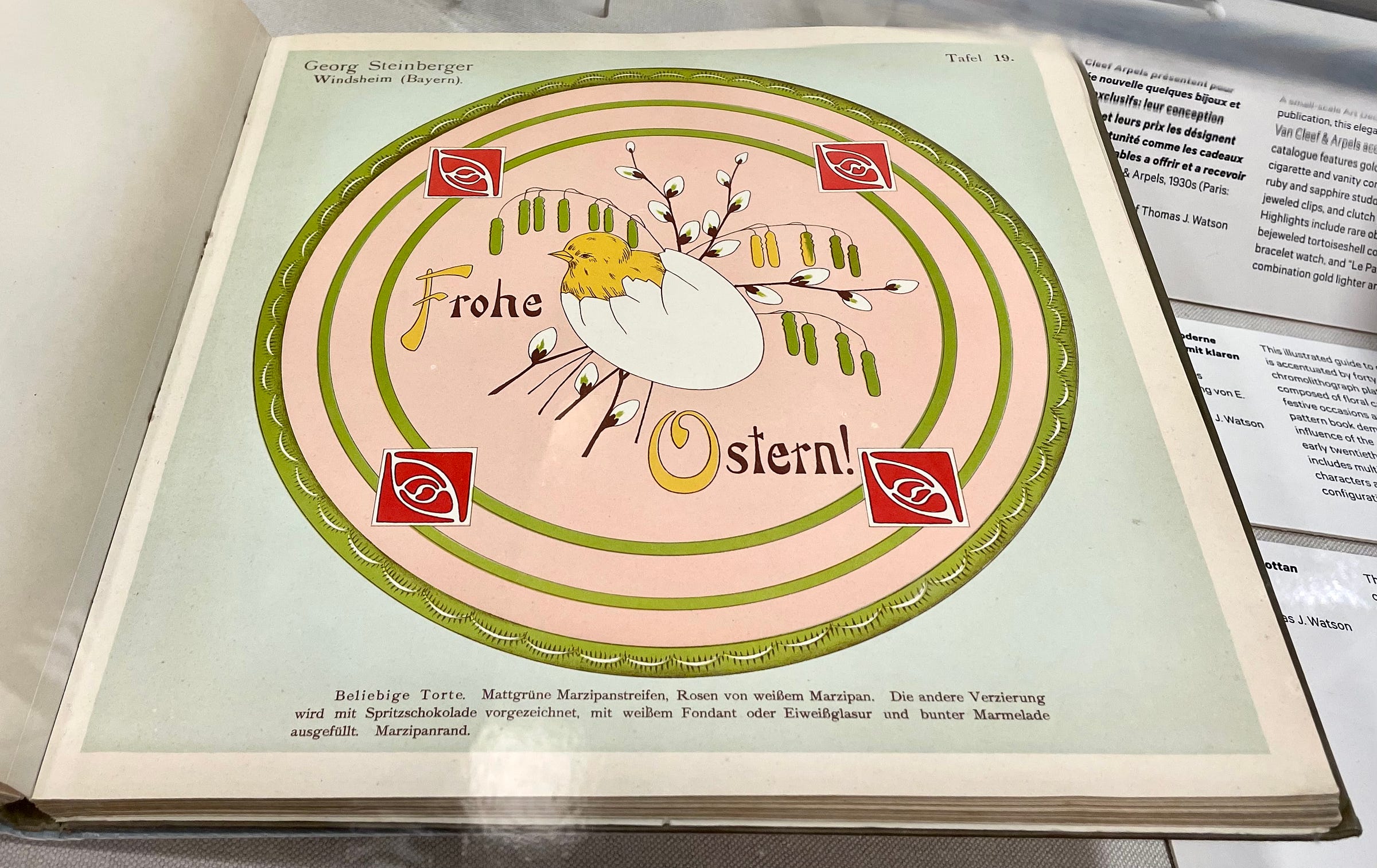
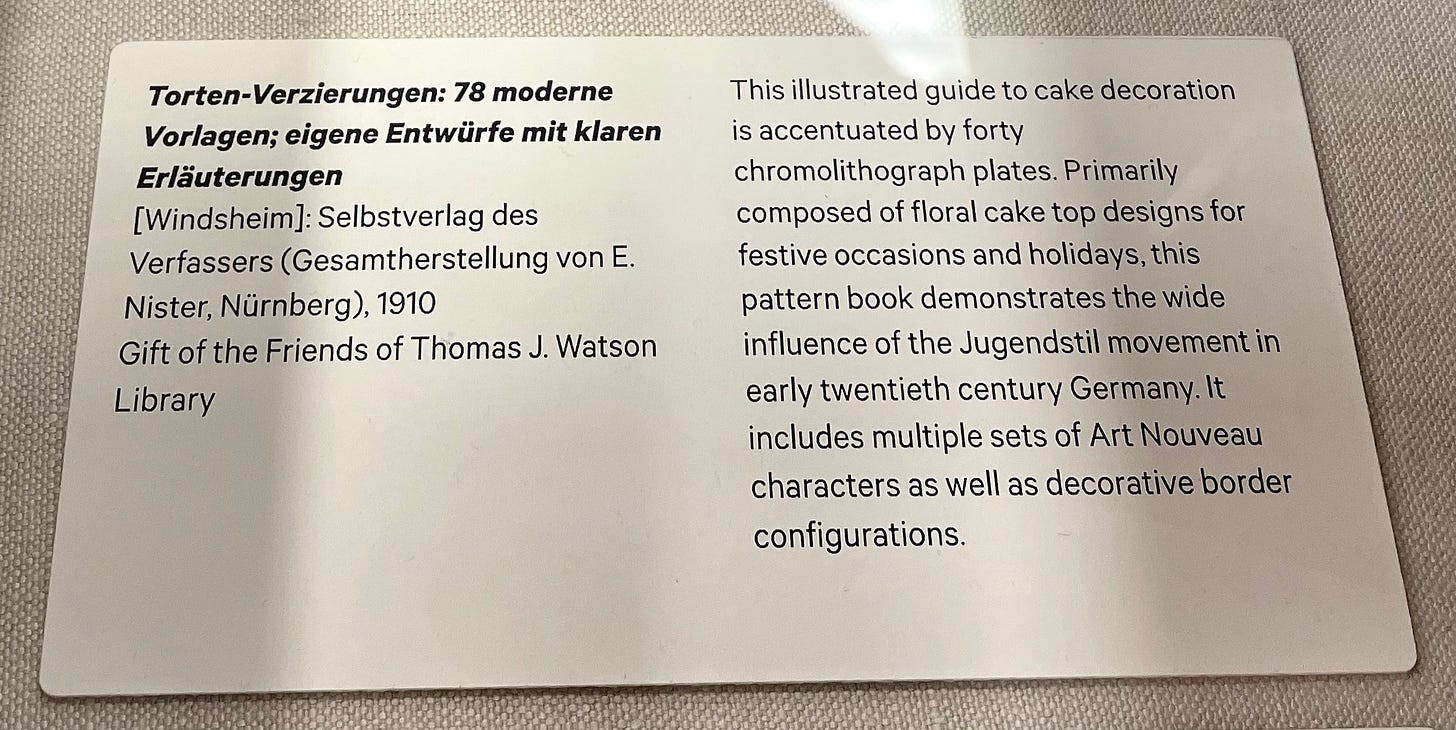
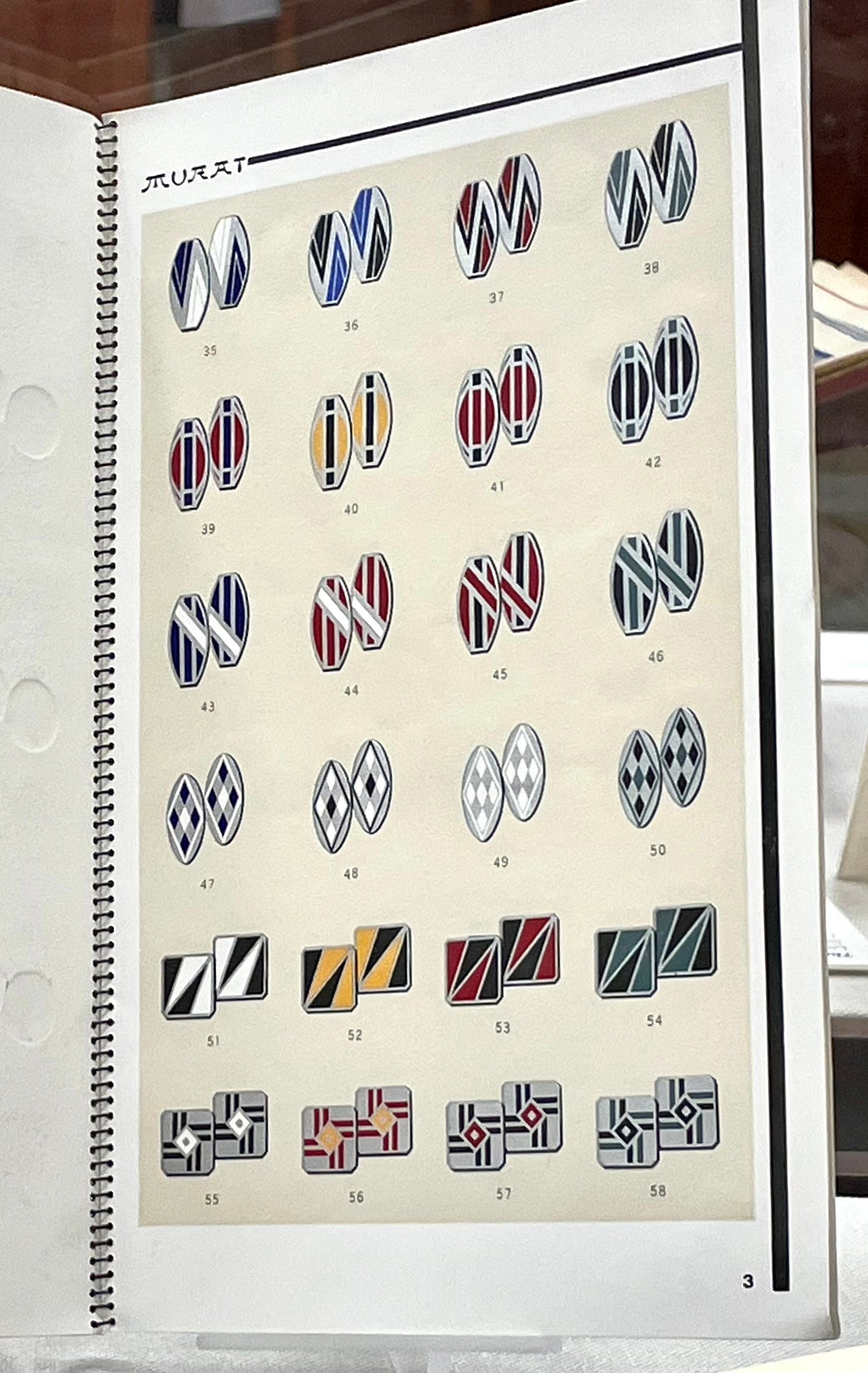
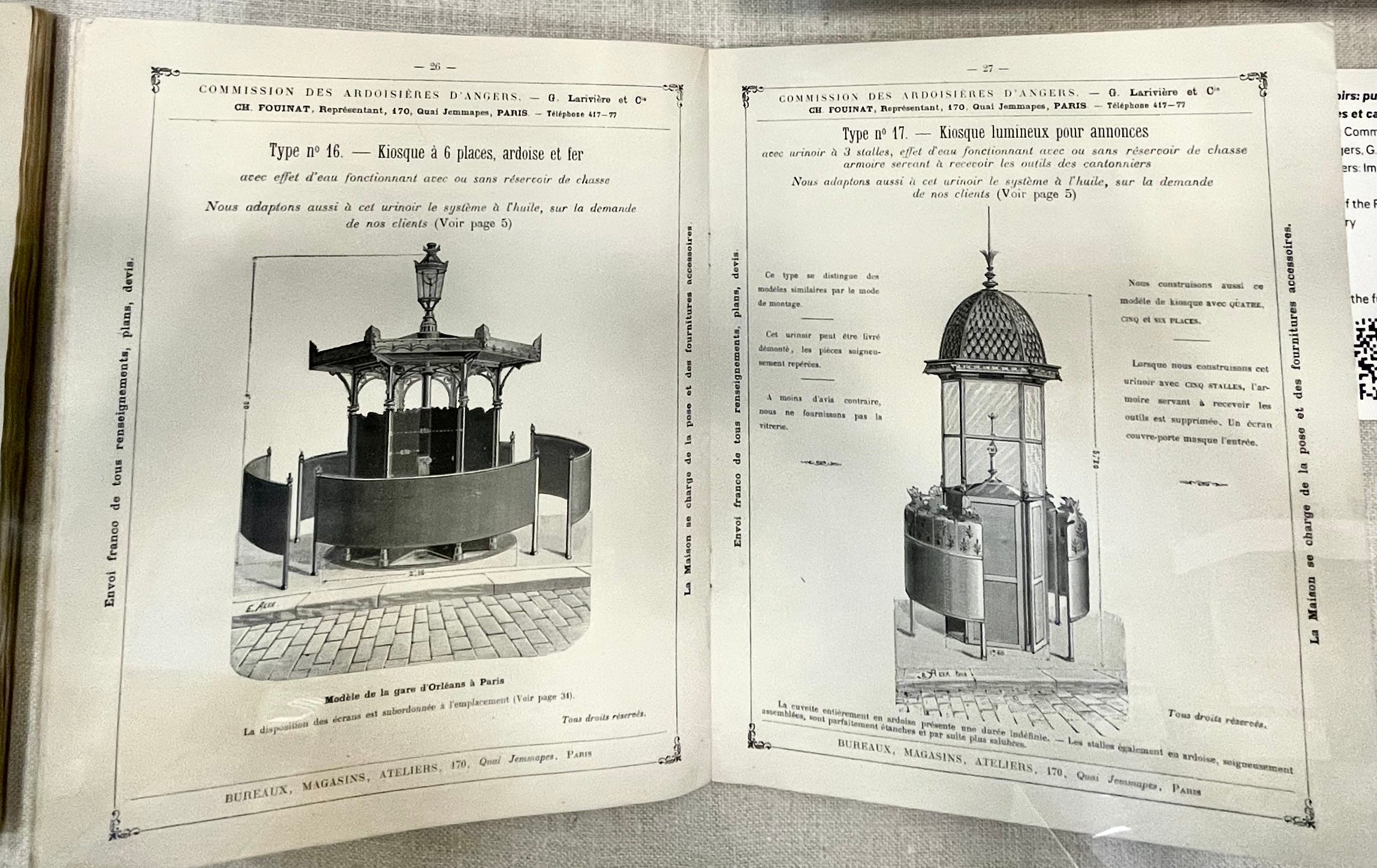
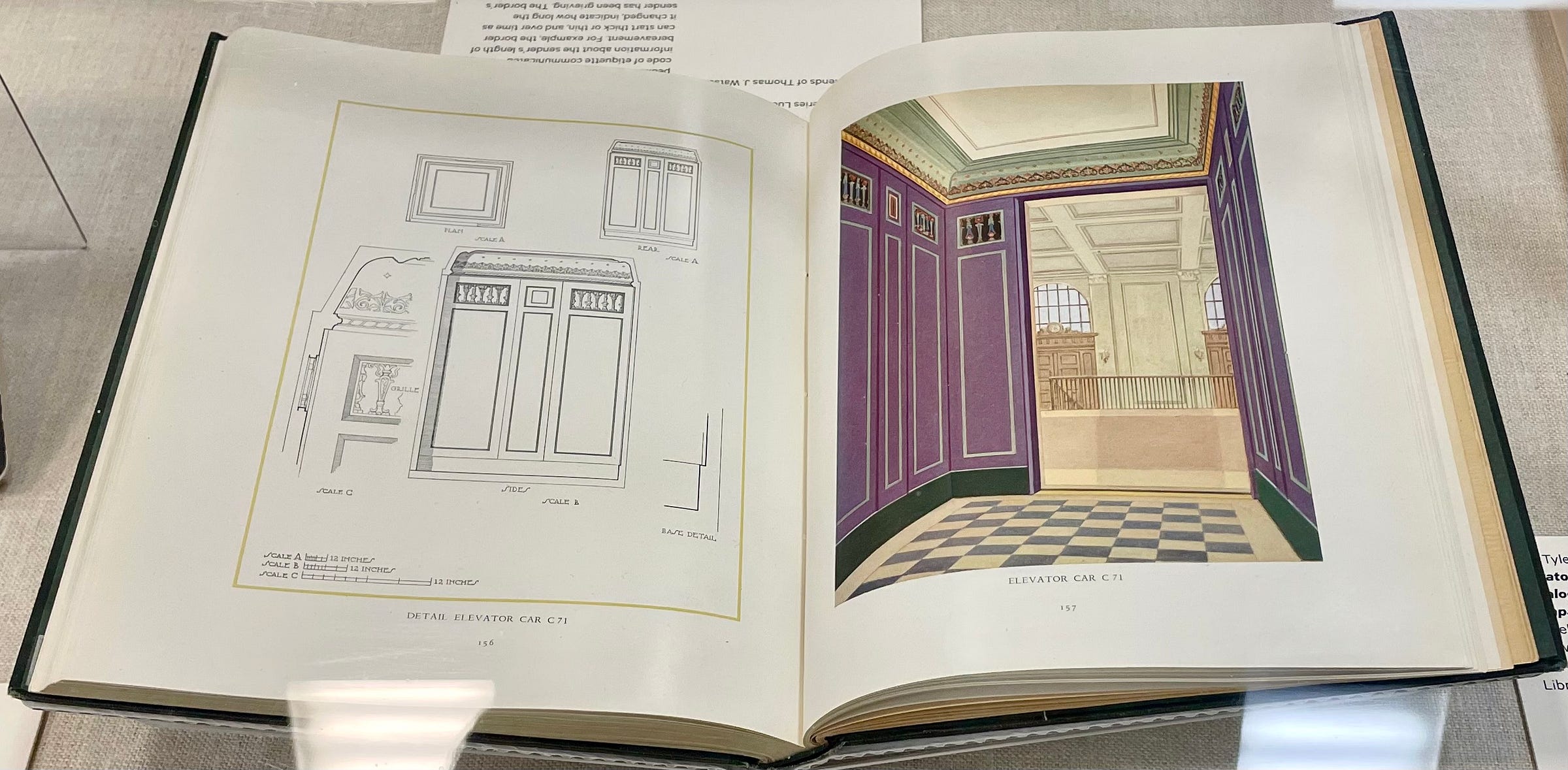
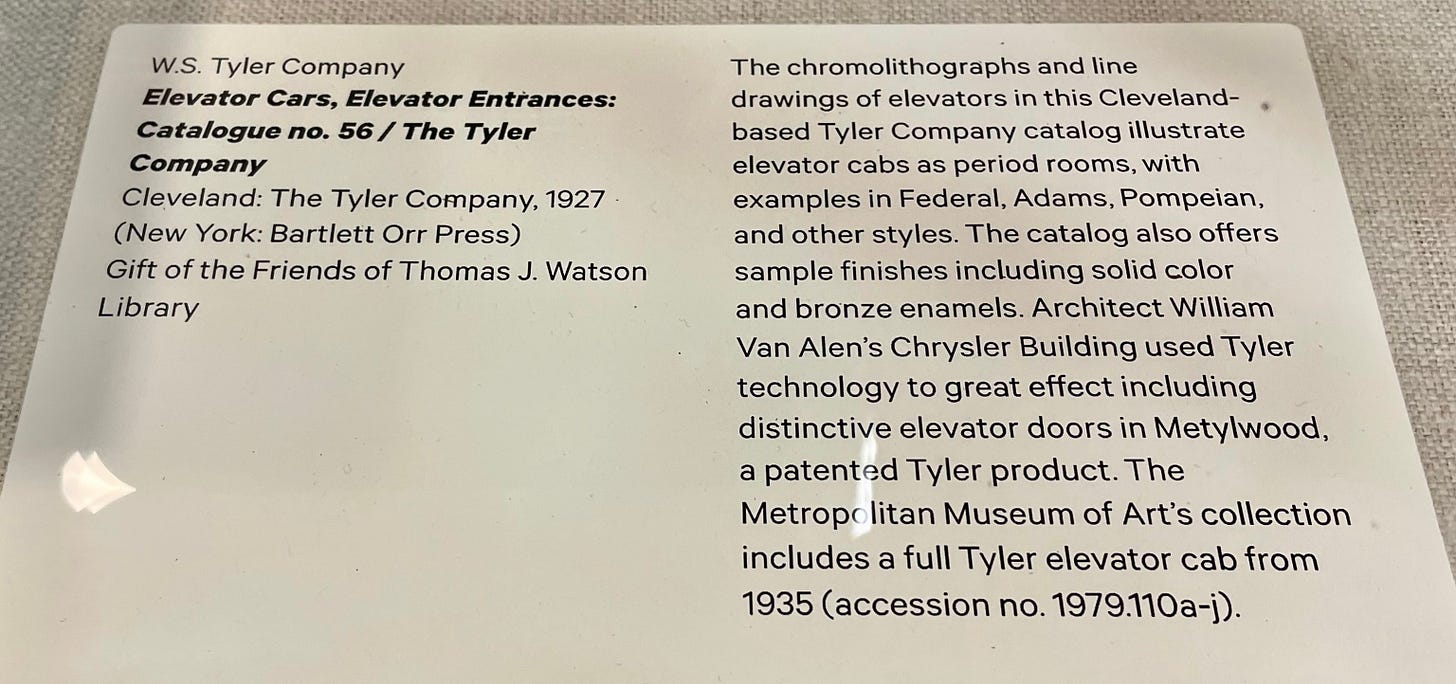
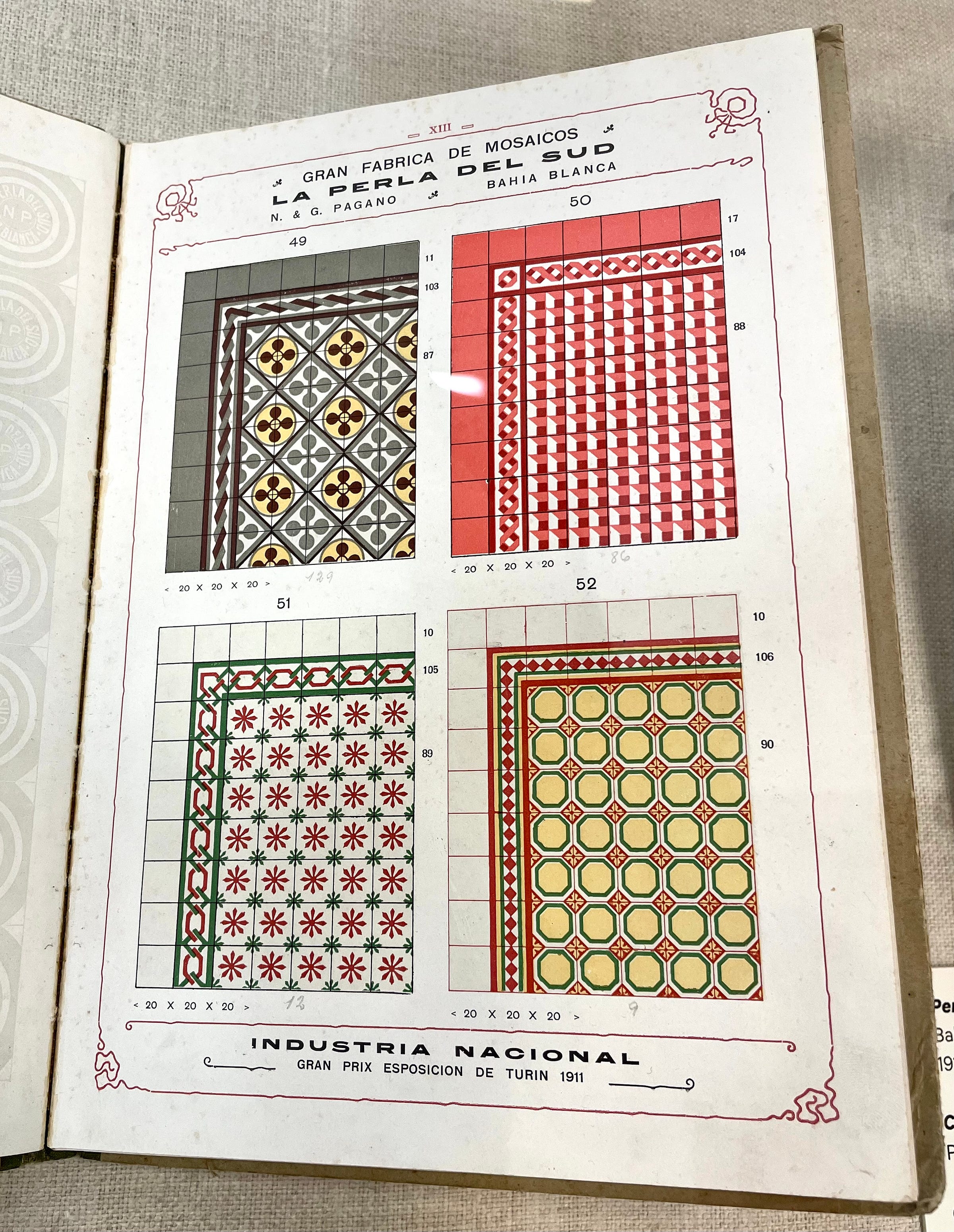
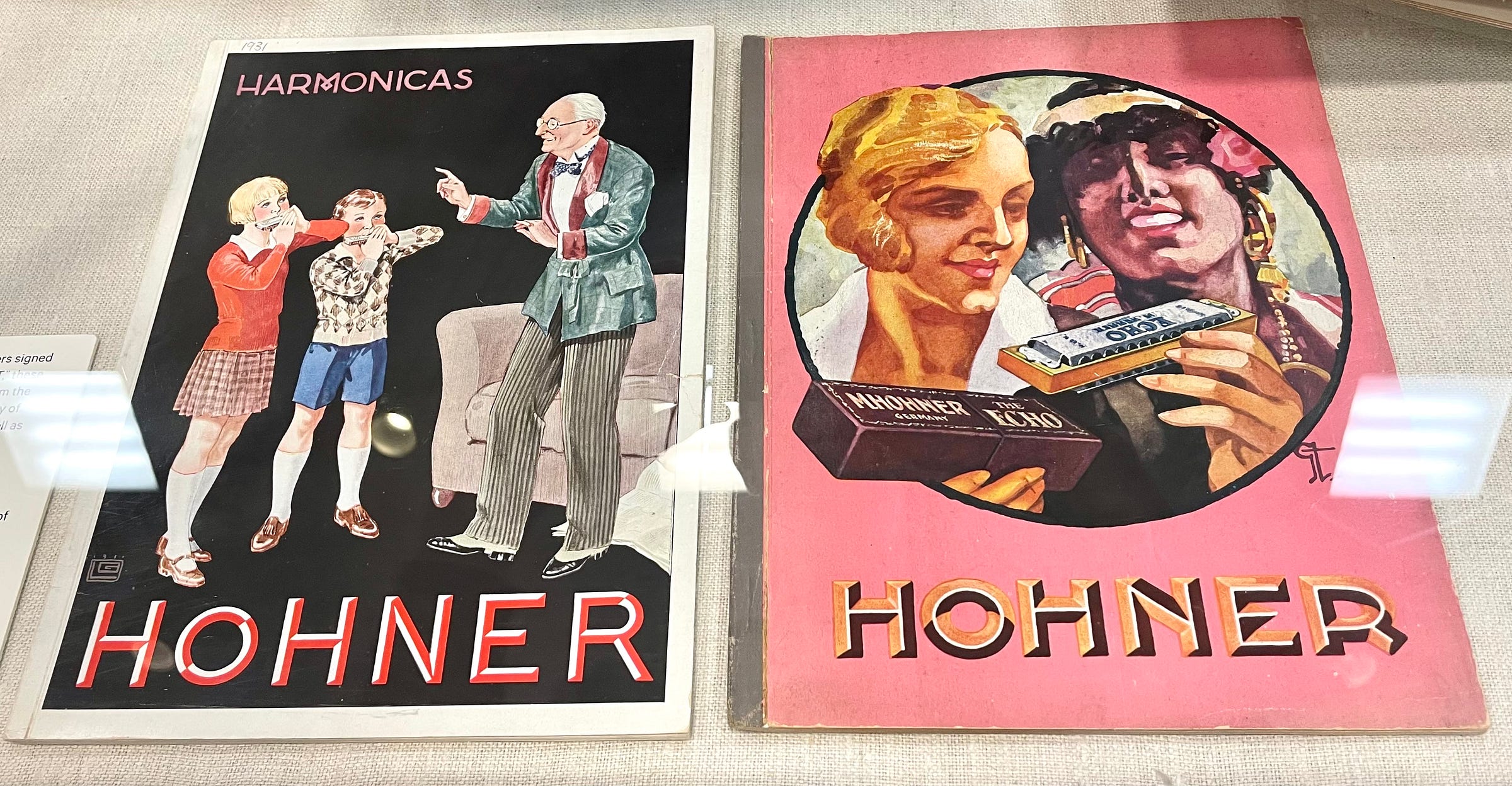
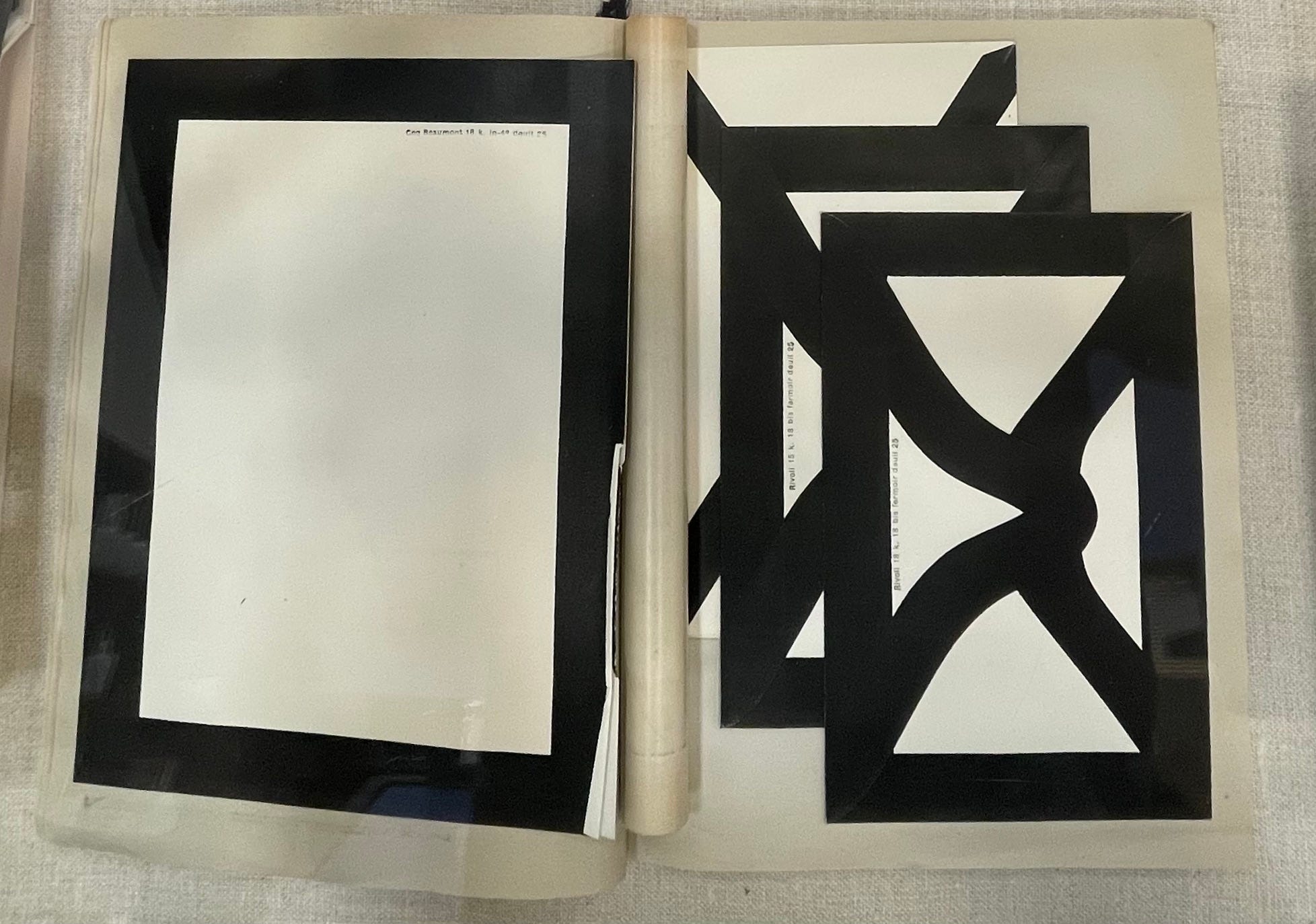
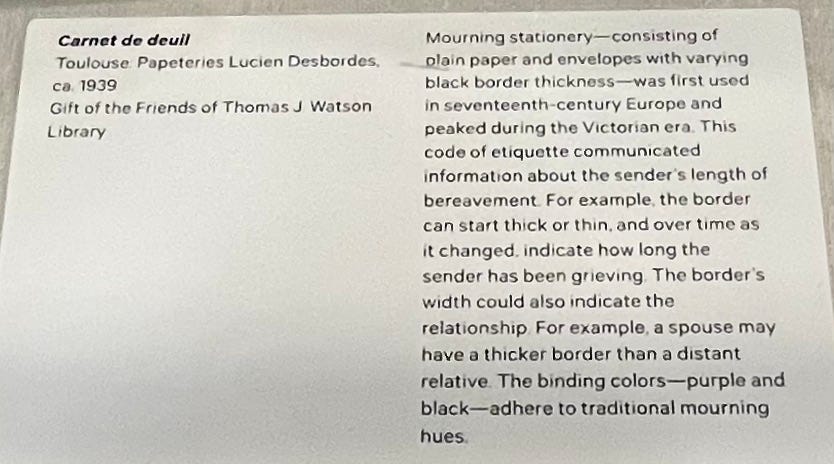
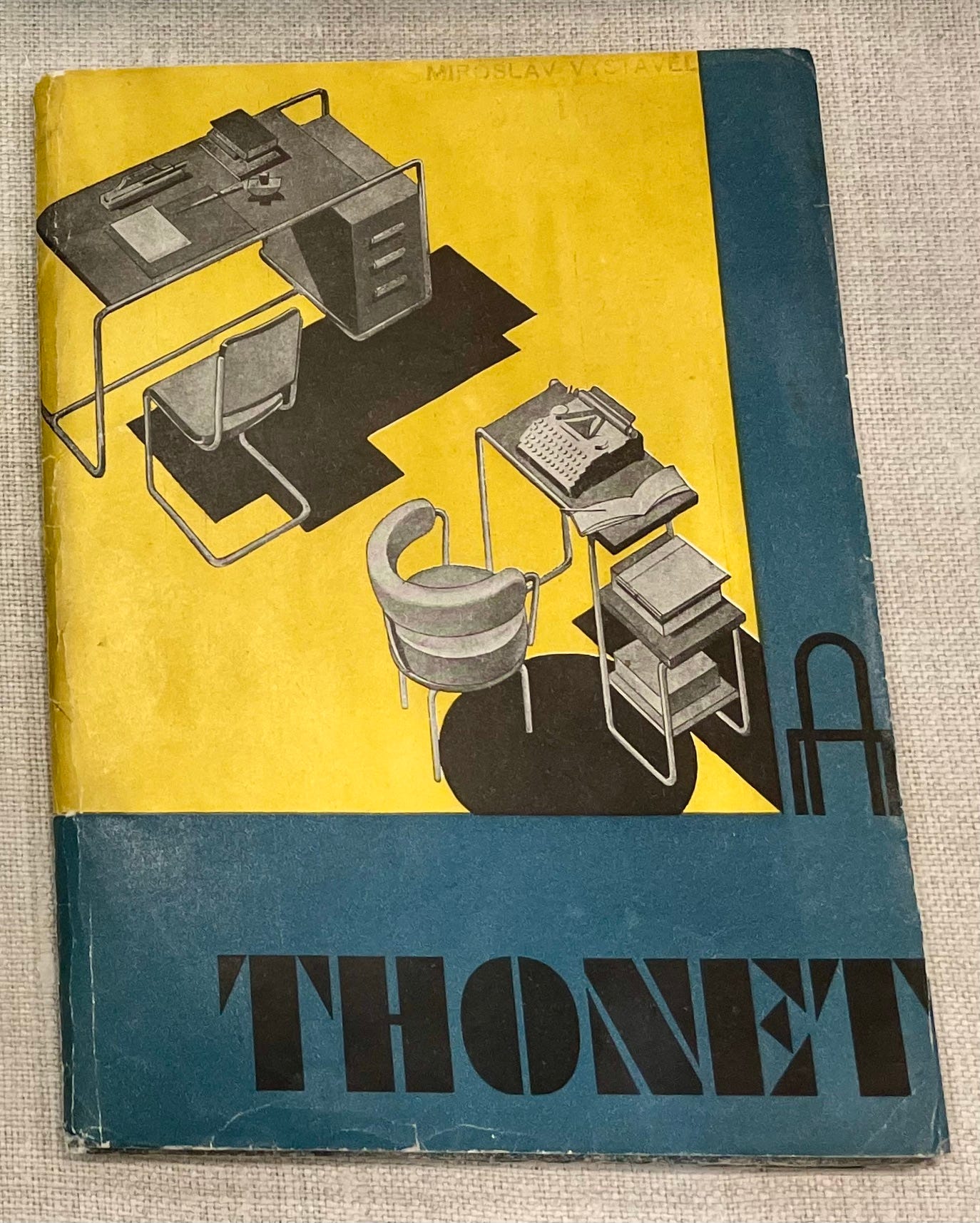
Now if there were only catalogs for urinals in elevator cars we’d be all set!
Oh man...the mosaic tiles have me nerding out and the cufflinks go hand in hand with the same obsession.